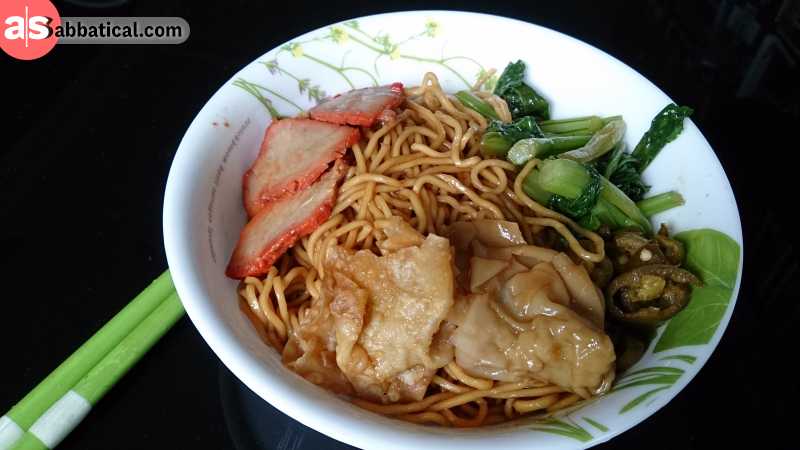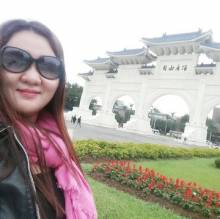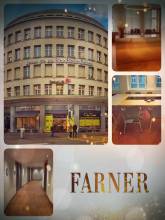The Diversity of the Singapore People
As a multi-racial country, the Singapore people consist of many different races. Majority of the country’s population are Malays, Indians, and Chinese. Thus, Singapore is not only multi-racial but multi-cultural and multi-lingual as well.
people consist of many different races. Majority of the country’s population are Malays, Indians, and Chinese. Thus, Singapore is not only multi-racial but multi-cultural and multi-lingual as well.
The best thing about living in this small country is that each race is encouraged to preserve its own unique traditions, culture, and religion. Everyone is very respectful and appreciative of each other, regardless of their religion and race.
Although the country is small in size, Singapore is one of Asia ’s most progressive cities. It’s the most modern city in all of Southeast Asia and enjoys a robust economy.
’s most progressive cities. It’s the most modern city in all of Southeast Asia and enjoys a robust economy.
The country’s unique ethnic diversity makes it a fascinating place to visit, not to mention the open-minded Singapore people who will be happy to welcome you with an open arm regardless of your color, race, and religion.
Brief History of Singapore

So how did Singapore’s ethnic diversity emerge?
Historically, the country’s original settlers are Malay Singaporeans who make a living out of fishing. These people live all over the small island and have been living peacefully until the arrival of Sir Stamford Raffles in 1819.
Stamford Raffles, British governor-general of the Dutch East Indies arrived at the tiny country in 1819 and established the country as an outpost for trading. During this time, he established Singapore as a British colony and started building schools and other establishments. That has allowed local businesses to flourish.
In 1823, Raffles drafted Singapore’s first-ever constitution and outlawed slavery, gambling, and other activities he deemed illegal. During this time, a massive number of migrants and merchants came to the island. A web of Chinese and Indian businessmen came to do business, and several commercial establishments have rapidly emerged.
There are also a good number of migrants that came from Indonesia , Ceylon (Sri Lanka
, Ceylon (Sri Lanka ), Pakistan
), Pakistan , the Middle East
, the Middle East , and several other nationalities, which came to the country in the hopes of a better life.
, and several other nationalities, which came to the country in the hopes of a better life.
Singapore’s success can be attributed to the hardworking attitude of the Singapore people and their diversity of skills, along with Sir Stamford Raffle’s strict western constitution that has resulted to a more disciplined approach to doing business. It is for this reason why the Singapore people have high respects for Sir Stamford Raffles, the founder of the modern Singapore City.
The Culture of Singapore

As a melting pot of cultures, the culture of Singapore is highly diverse. Although people are encouraged to follow their own cultures, religions, and traditions, certain events and festivals are widely practiced and respected all over the country.
Here are the most distinctive cultures of Singapore:
- Behind Singapore’s modern facade, ethnic races are still evident in the country’s culture. The culture of Singapore is defined by the many different ethnic groups in the city, which consist of the Chinese, Indian, and Malay.
- In the old streets of Chinatown, there’s a colorful mix of Chinese shops and restaurants as evident of the Chinese contribution to the local culture. Muslim characteristics are also apparent in the Arab Street, while Little India
 has its own distinct Indian atmosphere. The neo-classical buildings all over the city are also signs of British colonial influences.
has its own distinct Indian atmosphere. The neo-classical buildings all over the city are also signs of British colonial influences. - Singapore is known for its unusual laws, and it’s important for travelers to be aware of this when visiting the country. For instance, smuggling chewing gum into the country could land you in jail. Furthermore, spitting in public is considered illegal, and you could be slapped with a hefty fine. Failure to flush a toilet can also result in a rather hefty fine.
- The religion in Singapore is also diverse. In fact, more than ten different religions are being practiced. Each racial group follows its own distinct religion and numerous religious festivals are being celebrated throughout the year. Although the festivals are unique to individual races, all Singapore people have widely respected and accepted these festivals.
The Singapore People

Singapore is a small country, but it’s one of the most densely populated countries in the world. A population of almost 4.5 million lives close to each other in a 697-sq km area.
As a melting pot of races, the city-state is packed with a wide variety of people in different races.
Here are some interesting things about the Singapore people:
- Singapore has a colorful mix of languages, and the government recognizes four of these. These are English, Malay, Tamil, and Mandarin. Although the country’s national language is Malay, English is widely spoken. They also have their own version of the English language. In the streets, locals can be heard talking in the “Singlish” language, a colloquial Singaporean English language.
- Religious tolerance is essential for the Singapore people who practice a diversity of religions. Most Chinese follows Buddhism, Taoism, and Shenism. Christianity in Singapore is also openly practiced, and so do Islam, Hinduism, and other religions.
- Like most Asian cultures, one of the most prominent Singapore values is showing respect to the elderly. The older people are highly respected in the Singapore culture and this among the traditions that have been carried over from the Malaysian and Chinese culture.
- Singapore might seem like an ultra-modern country, but it’s still a highly conservative society. For instance, homosexuality is illegal, and prostitution-related activities are punishable by law.
- Singaporeans are very respectful, which is why they won’t mind the many unusual laws imposed by their government. As a diverse country, they have also learned to be respectful of other religions and cultures.
- Another trait that you’ll notice about the Singapore people is their ability to queue. That is applicable everywhere in the city, most especially on the train. Being orderly is one of those Singapore customs that have been implanted in their minds as they grow up.
Singaporean Cuisine

The diversity of Singapore people is also evident in their food. Thus, Singaporean cuisine is highly influenced by Chinese, Malay, Indian, and European dishes.
Read more: What to Do in Singapore to Make An Unforgettable Tour?
Here are some of the most recommended local Singaporean cuisines:
Wanton Mee

The wanton mee recipe of Singapore is influenced by Hong Kong cuisine, although this dish has already been entrenched in the Singapore food culture over the years. It’s a noodle dish that’s typically eaten dry and drenched with some sweet sauce and topped with pork slices and dumplings.
Chai Tow Kway

The chai tow kway is a traditional Singaporean cuisine that consists of stir-fried radish cubes with eggs and other seasonings.
Laksa

This is a fusion of Malay and Chinese cuisines. This spicy noodle soup is made of vermicelli, bean curd puffs, coconut milk, shrimp, and fish slices. The laksa in Singapore is available in two versions, the Asam Laksa and the Curry Laksa.
Chili Crab

The chili crab is perhaps the most popular dish in Singapore. This crab dish is cooked in a sweet and spicy tomato chili sauce. Another popular version of the dish is the pepper crab, which is cooked in black pepper sauce. Although crab dishes are a bit expensive in Singapore compared to other Southeast Asian countries, some hawker stalls sell affordable chili crab Singapore.
Hokkien Prawn Mee

This dish is a combination of rice noodles and fried egg noodles cooked in a rich prawn stock. Fried pork meat, fish cake, prawns and squid, are then added. There are also versions that have pork strips, which makes the dish even more flavorful.
Barbecued Stingray

This dish consists of a stingray that’s traditionally wrapped in banana leaf before it’s grilled. A sambal paste made of dried shrimp paste is then added along with other spices and seasonings.
Fish Head Curry

This dish is a fusion of Indian, Malay, and Chinese cuisines although the original version of the dish is said to have a South Indian origin and has been heavily influenced by the different ethnicities in Singapore.
Oyster Omelet

The oyster omelet is famously served in various hawkers all over Singapore. It is one of those dishes that both the locals and foreigners love. You’ll also find this in several other countries in Southeast Asia, but the Singapore version of the oyster omelet is served with a special vinegar chili, which makes it even more flavorful.
Places to Visit in Singapore

Singapore is one of the most visited countries in Southeast Asia, thanks to its unique blend of European and Asian cultures.
Read more: Unknown Tourist Attractions in Singapore to Check Out!
There are so many places to visit in Singapore, but these places are not to be missed:
Botanic Gardens

If you’re on a budget and you prefer to explore Singapore attractions that are free, the Botanic Gardens should be on top of your list.
The scenic garden is home to more than 60,000 species of plants and animals. There’s also an orchid garden, although you’ll have to pay a minimal fee when entering this part of the garden.
Buddha Tooth Relic Temple

With diverse culture and religion, it’s not surprising to see numerous temples in Singapore. But one of the temples that stood out is the Buddha Tooth Relic Temple at the central Chinatown area. Home to Buddha’s tooth relic, this Chinatown Singapore temple has a beautiful facade, and its interiors are richly decorated.
Chinatown

It’s definitely worth exploring the Chinatown area of Singapore. It’s bursting with culture, where colorful shophouses and temples line the streets. Aside from the Buddha Tooth Relic Temple, the Chinatown is also home to various Chinese and Hindu temples with ornate designs.
There are also museums in the area and hawker stalls serving delicious and affordable Singaporean cuisines!
Gardens By the Bay

This is one of the most futuristic attractions in the city. It’s a garden built on a reclaimed land area in the middle of the city and features tropical horticulture that includes impressive tree-like structures that are up to 50 meters high.
These structures beautifully dominate the city skyline and are even more impressive at night.
Little India

Aside from the Chinatown, another colorful neighborhood in Singapore that’s worth exploring is Little India. The bustling neighborhood is home to many attractions including the very colorful Sri Veeramakaliamman Temple.
Other attractions to check out in the area are the house of Tan Teng Niah, Sri Srinivasa Perumal Temple, and the Temple of a Thousand Lights.
Marina Bay Sands

The Marina Bay is an iconic building in Singapore that function as a luxury hotel and a shopping mall with lots of dining options.
The building itself is truly impressive and is said to have cost US$5.7 billion to build, making it one of the most expensive buildings in the world.
Orchard Road

If you’re heading to Singapore to shop, then you should head to the Orchard Road. As the main shopping street of the city, the area is flanked by various luxury boutiques, shop houses, retail outlets, cafes, hotels, and nightclubs. In fact, the Orchard Road Singapore nightlife scene is worth checking out.
Singapore Flyer

This is basically Singapore’s version of the London Eye. It’s a giant Ferris wheel that opens to the stunning views of the city, and each car can hold as much as 28 people! It used to be the highest Ferris wheel in the world, reaching as high as 165 meters into the sky.
Universal Studios

For those traveling to Singapore with kids, the Universal Studios is a must-visit. Just like with the Universal Studios in the US, the Universal Studios Singapore rides are exhilarating.
This popular theme park is located within Resorts World Sentosa, which is a must-visit destination in itself! It’s an island on the southern coast of Singapore featuring numerous resorts, restaurants, hotels, casinos, and a wide range of entertainment options!
Singapore is a truly great place to visit. Thanks to the open-mindedness and respectful attitude of the Singapore people, it has become a multi-cultural country that has a remarkable tolerance for religious, cultural, and racial differences. Sure, Singapore may not be the cheapest country to visit in the Southeast Asia region, but the diversity of food, culture, and the Singapore people themselves have made it a truly worth it country to visit!















